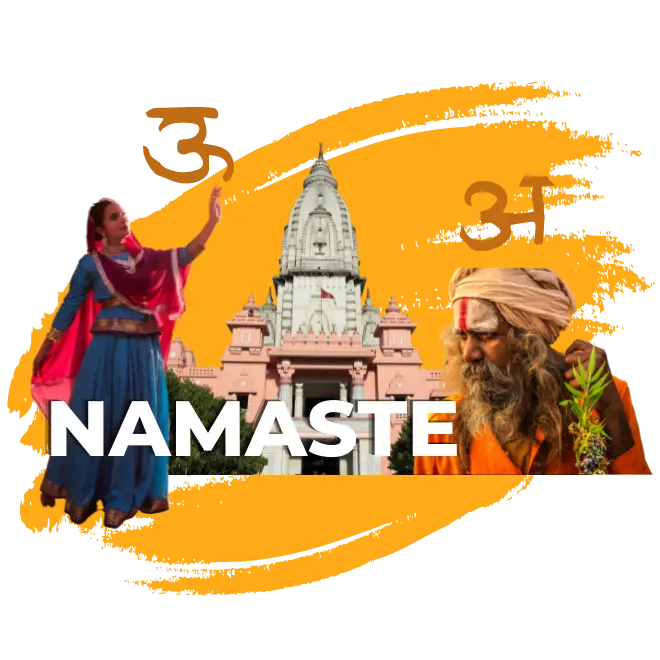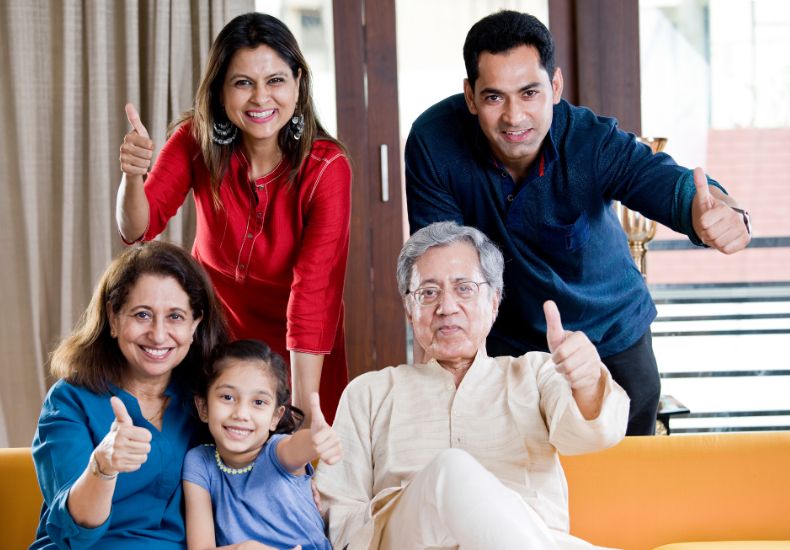Discover Langma's Hindi Language Program
Hindi is ranked among the top spoken languages in the world, having more than 600 million speakers. It holds an essential place among India's two official languages. Langma provides a comprehensive exploration of India's language and culture through an in-depth Hindi language course. Learning Hindi is more than just memorising words and grammatical rules; one must immerse oneself in a new culture and understand the nuances in Indian cuisine, literature, music, and art. You also get to know the way Indians speak to each other, how the family system operates, and how they tackle various problems. Hindi is the perfect language for communicating with India, allowing you to discover it in its entirety. Language learning establishes a direct bond with the core of Indian culture. If you are planning a trip to India and love watching movies and reading books, or are a fan of Indian cuisine, then mastering Hindi is the best way to immerse yourself in all India has to offer.
Langma Hindi courses, whether online or on-campus, are open to all skill levels and are structured from beginner (A1) to advanced (C2), with the primary emphasis on the development of the four language skills: reading, writing, listening, and speaking. Our Hindi language program attracts students who are seeking education and work opportunities in India and other Hindi-speaking countries. We offer scholarship, internship, and job placement advisory services to students. Langma Hindi courses focus on grammar, vocabulary, pronunciation, and language use, and prepare students for Hindi language proficiency tests recognised by the Indian government.
Start your voyage with Langma International and open up pathways in the Hindi language and culture!
The Hindi Language
Hindi is an Indo-Aryan language and is written in the Devanagari script. In India, it is the connecting language that links people from different states and varied linguistic backgrounds. The present-day Hindi is rooted in Khari Boli, a dialect of Delhi and neighbouring areas, which was spoken during the Mughal period and gradually standardised in the 19th and 20th centuries.
Besides, it is a language of the government, schools, the media, and everyday life in the regions of north and middle India. The history of Hindi literature is very long and rich; it goes from the devotional verses of Tulsidas and Kabir to the contemporary writings of authors like Premchand and Mahadevi Verma.
The Hindi film industry, known as Bollywood, is a significant factor in spreading the language worldwide through its music and movies. Hindi is still flourishing; it combines age-old sayings with new ones, and it remains very much a part of Indian culture and the country's legacy.
Benefits of learning Hindi
Learning Hindi, one of the top ten most spoken languages in the world, unlocks a world of opportunities in life, the arts, and the professional sphere. Whether you're passionate about India and its culture, planning a visit, or seeking career advancement on a global scale, mastering Hindi can be a stepping stone to a multitude of opportunities.
Experience the Rich Indian Culture
Hindi language learning gives you access to the Indian heritage and numerous facets of India, such as festivals, music, and movies, which form the heart of India. One can’t be far away from connection if they understand the language of India through classical poems and Bollywood movies.
Communicate with Millions
More than 600 million people worldwide speak Hindi. When you learn Hindi, it becomes easy for you to talk, mingle, network, and create strong connections not only in India but also in other Hindi-speaking nations.
Expand Your Career Opportunities
A combination of Hindi and India’s gregarious economy can do wonders for a business, tourism, translation, or international relations professional. Many global organisations offer privileges to workers who are efficient in spoken and written Hindi.
Boost Cognitive and Learning Skills
When one decides to learn a new language like Hindi, they not only increase their mental capacity but also improve their memory and problem-solving skills. Learning to write and read in Devanagari will not only be fun but also intellectually rewarding.
Make Travelling in India Easier
If you are a travel lover, trips across India would be easier with Hindi. Therefore, you will be able to talk with locals, understand directions, and have authentic experiences that "typical" tourists don’t.
Access Hindi Media and Entertainment
Knowing Hindi opens the door to unlimited entertainment without the need for translations or subtitles, including Bollywood movies, Indian television, music videos, and web series.
Develop Cross-Cultural Understanding
Hindi ushers one into a deeper appreciation of culture and global friendships. Removing the language barrier liberates and brings together people of different backgrounds.
Personal Growth and Confidence
Gaining knowledge of the Hindi language means understanding a profound manner of thinking. It is a journey that not only deepens one's cultural literacy but also boosts self-confidence and broadens one's perspective of the global community.
Indian Culture: Customs, Diversity, and Heritage
Indian culture is one of the oldest and most vibrant in the world. India is famous for its multiculturalism, spirituality, and the richness of its ancient traditions. It is fascinating how ancient Indian culture remains alive and continues to coexist with modern Indian culture through various forms, such as festivals, music, art, and religious sacraments. The present culture of India, the album of diverse and creative traditions, each a treasure of its respective region, is a perfect exemplification of India's legendary harmony and creativity. India continues to captivate people with its cultural richness.
1. The Essence of Indian Culture
Indian Culture is based on the principle "Vasudhaiva Kutumbakam" (the world is one family), which forms its core. The philosophy it embodies is harmony, respect, and peaceful coexistence among humans worldwide, regardless of race or religion. India is a fascinating blend of past and present, as reflected in its culture, shaped by its long history, which includes influences from the Indus Valley civilisation, the Vedic period, the Mughal Empire, and British rule.
2. Diversity of Languages and Religions
The country of India has 22 official scheduled languages and more than 1600 dialects. It is home to six major religions: Hinduism, Islam, Christianity, Sikhism, Buddhism, and Jainism. These six religions harmoniously coexist and therefore constitute the major constituents of India's character as a nation based on cultural pluralism. These six religions have their own rites, art, and philosophy, which add a freshness to the country's cultural fabric.
3. Indian Festivals and Celebrations
Celebrations are what Indian culture is all about, signifying, among other things, themes of unity, happiness, and serving God. Besides these, Diwali, Holi, and Eid-ul-Fitr are the festivals most widely known around the world. Each celebration is unique in its own way, with reverence, traditional cuisine, music, and dance that are all authentic Indian ways of festive cheer.
4. Indian Art, Music, and Dance
Indian cultural and artistic heritage is closely intertwined with the musical, dance, and visual arts of ancient times.
Music: The Indian classical music genres, such as Hindustani and Carnatic, are revered worldwide and coexist with contemporary music styles.
Dance: Indian dance is a highly complex art form based on the following four styles: Bharatanatyam, Kathak, Odissi, and Kuchipudi, which tell their stories through body and facial expressions.
Art and Craft: There are numerous intricate paintings, among which the most famous are Madhubani, Warli, and Pattachitra, which attract the world for their intricacy and representational nature.
5. Indian Cuisine
Indian cuisine is a delicious and visually appealing representative of the great cultural variety. Each district has its own unique taste, from the hot, spicy North Indian curries to the aromatic South Indian dishes. Indian food would not be complete without spices, herbs, and ingredients from small local farmers. Biryani, Dosa, Dal Makhni, and Chaat are some of the world-famous Indian foods that people all over the globe really enjoy.
6. Traditional Attire
Clothes in India usually vary according to the area, the event, and the weather. Classy, brightly coloured dresses such as Saree, Salwar Kameez, Kurta-Pyjama, and Sherwani are among the most popular Indian traditional costumes. Handloom cloths and embroidery styles—Banarasi, Kanchipuram, and Phulkari—are the means through which the Indian craftsmen reveal their artistic talents and the high level of their handiwork.
7. Emerging Technology and Innovation
Modern India is rapidly becoming a global technology hub, driven by a large consumer base, digital transformation, and initiatives like Startup India and Digital India. The growth of the IT and software industry, along with sectors like AI, fintech, renewable energy, and e-commerce, positions India as both a software exporter and a sizable domestic market. With a youthful, skilled workforce and internet access, India is attracting companies looking to digitalise. This blend of cultural retention and technological adoption showcases India's progress while honouring its roots.
8. The Modern Influence
Although still very much rooted in tradition, modern Indian culture incorporates elements of globalisation, technology, and creativity. Indian culture is influencing the world at large through Bollywood movies, avant-garde art, and fashion, while also preserving its long-standing roots.








